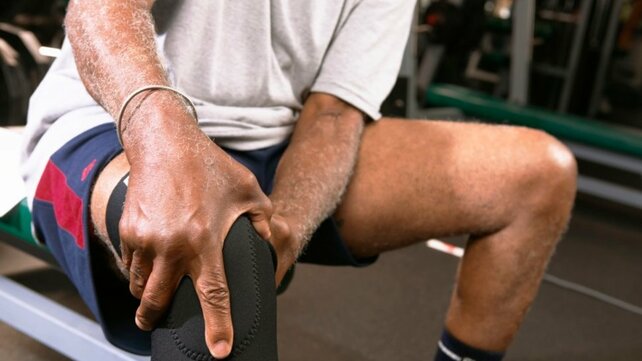Alternative Therapies for Joint Pain: Non-Surgical Treatments

While joint replacement surgery is an effective option for end-stage arthritis, most frequently, it is not the first step or the only option. In fact, multiple non-surgical treatments for hip and knee pain can provide significant relief, improve function, and help delay or even avoid surgery.
Physical therapy
One of the most effective ways to treat hip and knee pain without surgery is physical therapy. A physical therapist can guide you through exercises that strengthen the muscles around the joint, improve range of motion, and reduce pain. Often, weak or imbalanced muscles contribute to joint stress, so strengthening them can help alleviate discomfort. Additionally, manual therapy techniques and targeted stretches can improve flexibility and help with pain management.
Over-the-counter medications
Medications such as acetaminophen or nonsteroidal anti-inflammatory drugs (NSAIDs) can help reduce pain and inflammation. How ever, it’s important to be cautious about long-term use of medications like NSAIDs due to potential side effects, such as stomach ulcers or kidney damage.
For joint-specific pain, topical treatments like creams, gels, or patches containing menthol, capsaicin, or lidocaine can provide localized relief. If pain persists, injections may also be an option.
Injections
Corticosteroid injections are a popular option for reducing inflammation in the joint. These injections can provide significant pain relief that lasts for weeks or even months, allowing you to participate in physical therapy or daily activities more comfortably. However, while they are effective for many patients, they are typically used in combination with other treatments, and their long-term use is limited due to potential side effects.
Hyaluronic acid is a natural substance found in joint fluid that helps lubricate the joint and reduce friction. In patients with osteoarthritis, the natural hyaluronic acid in the joint may break down, leading to pain and stiffness. By injecting a synthetic form of hyaluronic acid into the joint, the lubrication in the joint could be restored and provide relief from pain. This treatment can last anywhere from several weeks to a few months and is a good option for people who are not ready for surgery.
Lifestyle modifications
Making simple lifestyle changes can have a big impact on joint health. Maintaining a healthy weight reduces stress on the hips and knees, potentially alleviating pain. Additionally, low-impact exercises like swimming, cycling, or walking can keep you active without putting too much strain on your joints. It's also important to practice good posture and avoid activities that exacerbate your pain.
Bracing and assistive devices
In some cases, using a knee or hip brace can provide extra support and reduce pain during movement. A brace can help stabilize the joint, improve alignment, and prevent excessive stress on the affected area. For people with difficulty walking, assistive devices like canes or walkers can help offload pressure from the joint and improve mobility.
Alternative therapies
Some patients find relief through alternative treatments like acupuncture, massage therapy, or chiropractic care. These approaches aim to promote healing, reduce pain, and improve overall function. While more research is needed to confirm their efficacy, many patients report experiencing benefits from these therapies.
Heat and cold therapy
Heat and cold packs are simple, inexpensive methods to manage pain and inflammation acutely. Cold therapy, such as ice packs, can help reduce swelling and numb the area, providing immediate relief. Heat therapy, like warm compresses or heating pads, can help relax muscles, increase blood flow, and soothe stiffness in the joint.
Hip and knee pain doesn’t always have to lead to surgery. With a combination of lifestyle changes, physical therapy, medications, and advanced treatments like injections, many patients experience significant relief and can continue living an active, fulfilling life. However, it’s essential to work closely with your team to determine the best approach for your individual needs. If you're dealing with hip or knee pain, don’t wait for it to get worse. Explore these non-surgical options and take the first step toward finding the relief you deserve.
When to consider joint replacement surgery
While non-surgical treatments can be highly effective, they may not be a permanent solution for everyone. If your pain is severe, persistent, or limits your ability to perform daily activities, surgery may be necessary. Joint replacement surgery, whether partial or total, can provide long-term relief and help restore function when other treatments have not been successful.
If you're unsure where to start, consider scheduling an appointment with a specialist who can help guide you through your treatment options.

About the Author:
Mouhanad El Othmani, MD
Dr. Mouhanad El Othmani is an orthopedic surgeon with the Brown University Health Orthopedics Institute at The Miriam Hospital and Newport Hospital. He specializes in conditions of the hip and knee joints with a special interest in anterior hip and robotic knee replacement surgeries.
Be Well Newsletter
When is it Time for Joint Replacement Surgery?

When joint pain affects your quality of life to a degree where you can no longer do the daily activities you enjoy, then it is time to talk with a doctor.
Find a Doctor

The right provider is in our network
Search more than 1,200 providers in our network.



